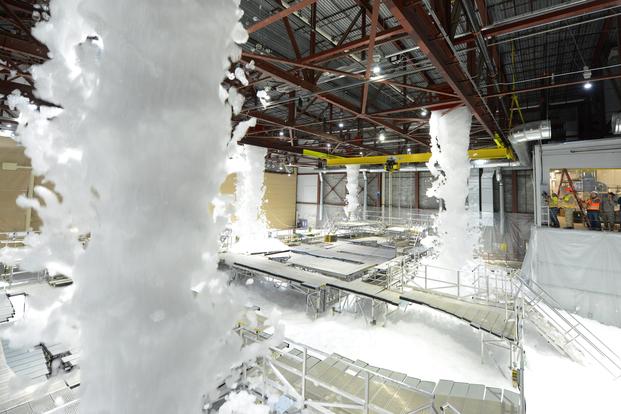The chief of the National Guard Bureau told lawmakers today that the Guard doesn't have enough money to clean up the potentially hundreds of drinking water systems contaminated by toxic firefighting foam used on Guard installations.
The Department of Defense has identified 401 military installations where there are "one or more areas with known and suspected release" of hazardous fire-fighting foam into water supplies, Sen. Richard Durbin, D-Illinois., the ranking member of the Senate Appropriations Committee's defense subcommittee, said during a April 17 hearing.
"What my colleges have told me is that the use of this fire-retardant foam has resulted in a public health hazard and a danger to water supplies in the area of these installations," Durbin said.
Durbin asked Gen. Joseph Lengyel, chief of the National Guard Bureau, to characterize how large of a "public health crisis" this water contamination is and how much money will it take to correct it.
"It is a problem," Lengyel said. "I can't give you a number of the total of what it may take to mitigate it."
There are "many installations" that have been affected by perfluorooctane sulfonic acid, or PFOS, and perfluorooctanoic acid, known as PFOA, Langyel said.
"The first thing we have got to do is inspect them, determine if there is a determinable amount in the water; if there is and the government is determined to be liable, then we are going to have to find a way to mitigate that so we can make the water safe to drink for the communities," Lengyel said.
The Guard made a recent request to access funds in the Defense Environmental Restoration Account.
Currently, state-run facilities are not eligible to receive these funds, Lengyel said.
"If we have to spend money to mitigate these [water contamination] issues, then we are going to have to use Air National Guard or Army National Guard operations and maintenance money to do it, and obviously we don't have that money in our accounts," Lengyel said.
Sen. Jon Tester, D-Montana, asked if these firefighting chemicals were used on bases exclusively, or in forests as well.
Lengyel said they are used in "airports to put out fires all over the country, including civilian airports."
"It's not just a military thing," Lengyel said.
Tester wanted to know why the Guard and the Defense Department isn't looking for "benign fire-fighting chemicals such as the ones used in the forests ... because if we are creating a problem with this, we need to stop where the problem is."
Lengyel said he believed that "over time, they will transition to a safer version of this fire retardant."
The Defense Department launched an investigation in late 2016 to determine the scope of the problem at military installations across the country after drinking water supplies were shut down due to contamination near Patterson Air Force Base, Colorado.
-- Matthew Cox can be reached at matthew.cox@military.com.









